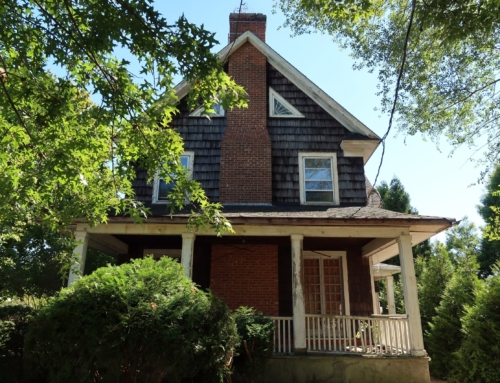If you drive around the Broadmoor neighborhood of New Orleans, it’s hard to imagine that you’re about 12 feet below sea level, one of the lowest points of the city.
Nearly two years ago, after Katrina hit and the levees broke, this neighborhood of pastel-colored homes was submerged below 10 feet of water. Today, many of the homes are in the process of being fixed up.
Still, you can’t help but notice the FEMA trailers that dot the landscape. Crime has become a major issue here, explains Diana Pinckley, a local publicist specializing in higher education and member of Women of the Storm (womenofthestorm.net). And yet, Broadmoor is an example of middle class and working class neighbors in a racially-mixed neighborhood, working together to pull themselves back from ruin.
But it isn’t Mayberry – yet. Pinckley is spending the afternoon driving me around the various neighborhoods of New Orleans so that I can see for myself just how far the city has come in the past 22 months.
We drive by the beautifully-detailed Rosa Keller branch of the New Orleans Public Library. At 14 feet below sea level, there is still blue tarp on the roof. The doors are locked, Pinckley says. “Only 8 of 13 libraries have reopened,” she says. “We hope to have it opened soon.” (In mid-June, the Broadmoor Library announced a $1.9 million grant from Carnegie Foundation to help reconstruct the Rosa Keller branch.)
It’s not like we’re driving in the middle of nowhere. Broadmoor is perhaps 3 or 4 miles from downtown New Orleans, and from some places, you can see the crowns of the tallest office buildings. But in many places, the neighborhoods here are so destroyed, so deserted, that you almost can imagine that you are in the middle of nowhere – nowhere anyone wants to be.
Driving through the streets, which are in awful shape thanks to being submerged in a toxic soup for weeks and weeks, you get used to seeing redone homes intermixed with homes that have been boarded up, are stripped bare, or those that just aren’t there anymore.
We drive through a major intersection. All four corners house empty commercial buildings, the home of former thriving businesses that have yet to reopen. And then we drive through another just like it. And another. I remark how unusual it seems to have so many businesses that have closed up.
“One of the big problems we’re having is that the daily pieces of your life, like filling your car with gas, or buying groceries, isn’t the way it used to be,” Pinckley explains.
Many grocery stores haven’t reopened. Pinckley has to plan where she’ll buy gas because many gas stations haven’t reopened.
“The fabric of our daily lives has holes in it all over the place,” she says.
Women of the Storm is working hard to change all that. In the face of political paralysis, more than 300 female residents of the city have banded together to draw attention to what hasn’t been done, and who hasn’t come to see the destruction of a major American city.
At her art-filled 1920s house in the University area, Women of the Storm founder Anne Milling says that of the 110th Congress, about a quarter of the House of Representatives and about half of all U.S. Senators have paid a visit to New Orleans since the levees broke.
“More members of Congress have visited Iraq than have come here,” she says pointedly.
Women of the Storm is trying to change that. The nonprofit group cuts across all cultures, races, religions, and ethnicities, counting as members women who work and those who are stay-at-home moms.
“We’re all just pulling together, trying to reach out and spread the word about what’s happened here and what still needs to be done,” Milling explains.
Even two years later, the numbers of homes that were destroyed is astonishing: In Louisiana, nearly 205,000 homes were destroyed or sustained major damage, accounting for 72 percent of all homes damaged by Katrina and Rita, and the subsequent flooding. According to the Office of Gulf Coast Rebuilding, another 77,173 homes in Mississippi, Alabama, and Texas were destroyed or sustained major damage. About 60 percent of the residents of New Orleans have returned.
Through May, the U.S. government has spent $110 billion in aid for hurricane relief, about $59 billion of which went to Louisiana, according to Women of the Storm, and the Congressional Record. Milling and Pinckley say the state needs another $34 billion to really help it recover.
Those sounds like huge numbers and you wonder about the fraud, and the FEMA trailers that are already rusting out, and the streets with potholes the size of Hummers. You wonder how $59 billion couldn’t be enough to rebuild several cities.
But then you drive through the 9th ward, vacant block by vacant block, and you wonder how much it’s worth to save a major American City.
Next week: Is a neighborhood still a neighborhood if none of your neighbors live there? One 9th ward resident explains what it means to rebuild a home five generations of his family have lived in.
Published: Jul 5, 2007






Leave A Comment